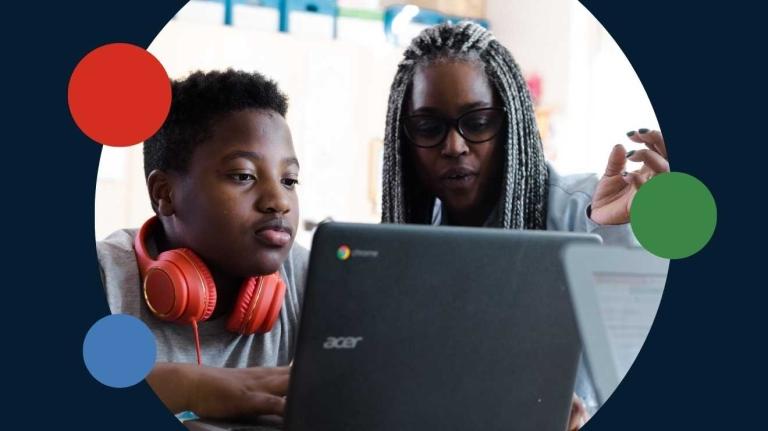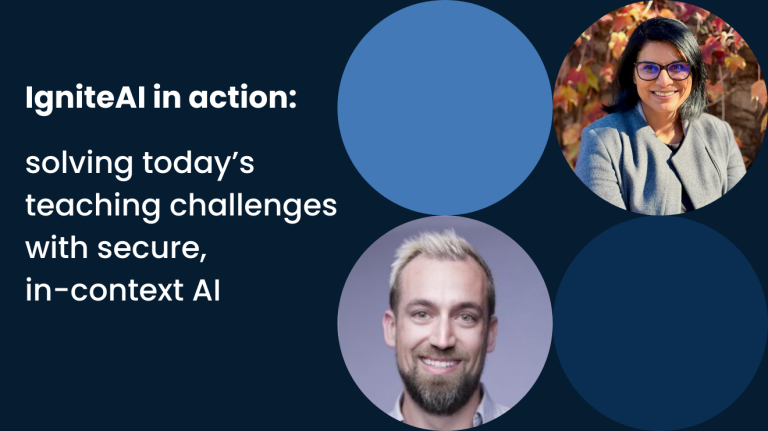Across the education landscape, conversations about academic integrity and artificial intelligence are everywhere. Some view AI as the greatest integrity challenge of our time—an existential threat to the way we learn. But history tells us otherwise.
Like the calculator, the internet, and mobile devices before it, AI represents a profound disruption to traditional academic practices. Each of these technologies initially provoked concern, yet over time, they expanded the capacity to teach, learn, and assess in richer, more authentic ways. The same opportunity stands before us now.
A moment of reckoning and redesign
The emergence of generative AI has exposed long-standing tensions in education, leaving us to question:
- How do we measure learning in ways that go beyond evaluation of an end product to emphasize the process and learning along the way?
- How do we motivate students when content creation can be automated?
- How do we cultivate the uniquely human skills, such as moral judgment, empathy, and creativity, that AI cannot replicate?
These are not technology questions. They are pedagogical questions.
Attempts to address AI misuse purely through detection tools or restrictions risk missing the deeper opportunity. Academic integrity is not only about compliance—it’s about connection, relevance, and trust. Addressing AI-related integrity concerns requires a holistic examination of the motivational, instructional, and assessment practices that shape student behavior.
Beyond policing: understanding why students turn to AI
Students rarely engage in misconduct out of malice. More often, they do so because they are overwhelmed, uncertain, or disconnected from the purpose of the work. When learners feel seen, capable, and inspired, integrity follows.
- Motivational factors: Academic honesty improves when students see meaning in what they are learning and how it connects to their goals.
- Instructional design: Teaching students how to use AI ethically and responsibly, rather than pretending that it does not exist, builds critical AI literacy.
- Assessment redesign: Shifting from static, one-time submissions to iterative, applied, or reflective assessments makes learning visible in ways that AI cannot replicate.
When we design with these principles in mind, AI becomes less of a shortcut and more of a scaffold, supporting deeper learning rather than replacing it.
The expanded definition of integrity
For too long, academic integrity has been framed around working alone—as if learning only “counts” when it happens in isolation. But the world that students are preparing for rewards those who can use tools responsibly, collaborate thoughtfully, and communicate how their ideas were developed. Integrity today is less about avoiding support and more about being clear and intentional in how that support is used.
What if integrity in the AI era were defined not by isolation, but by transparency? Not by prohibition, but by purpose?
In this vision, academic integrity expands from doing your own work to owning your learning. Educators can model this by acknowledging AI as a legitimate part of modern learning and helping students articulate how and why they used it.
This reframing doesn’t erode standards; it strengthens them. It prepares learners for a world in which responsible AI use is an expectation, not an exception.
The path forward
Educational leaders face a pivotal choice:
Will we treat AI as a threat to police or as a catalyst to rethink why and how learning happens?
The institutions that thrive in this new landscape will do three things:
- Empower faculty with AI-aware pedagogical practices, backed by institutional supports that help them redesign instruction to embrace AI responsibly and integrate it as a tool for deeper learning.
- Redesign assessment to value applied learning and authentic demonstration by emphasizing real-world tasks, iterative feedback, and opportunities for learners to show understanding in context.
- Foster cultures where integrity is cultivated through relevance, agency, and trust by designing learning experiences that help students see purpose in what they’re learning, feel empowered to take ownership of their work, and strengthen shared understanding between learners and educators.
At its core, education has always been about adaptation—helping learners grow and respond to change. AI is simply the latest change agent challenging us to evolve.
The real question is not how we can outsmart AI, but how we can refine our practices to keep learning meaningful and equip students for the world ahead.




